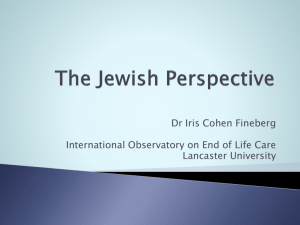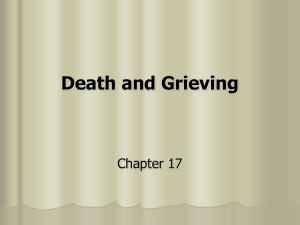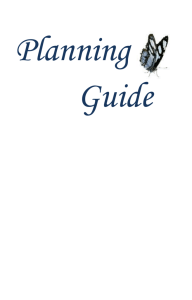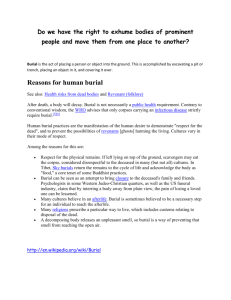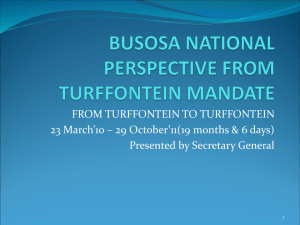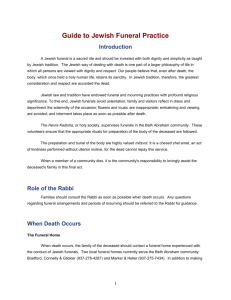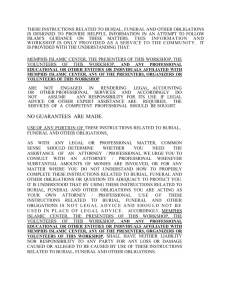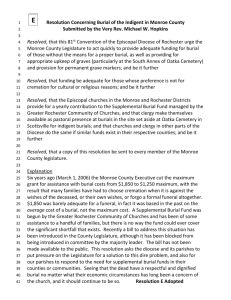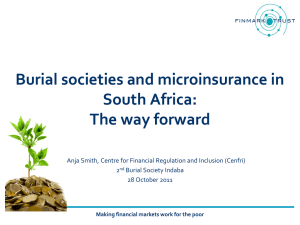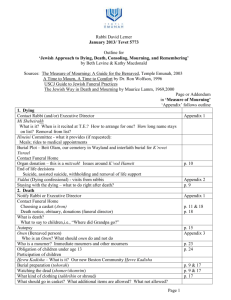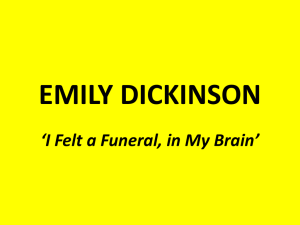Burial
advertisement
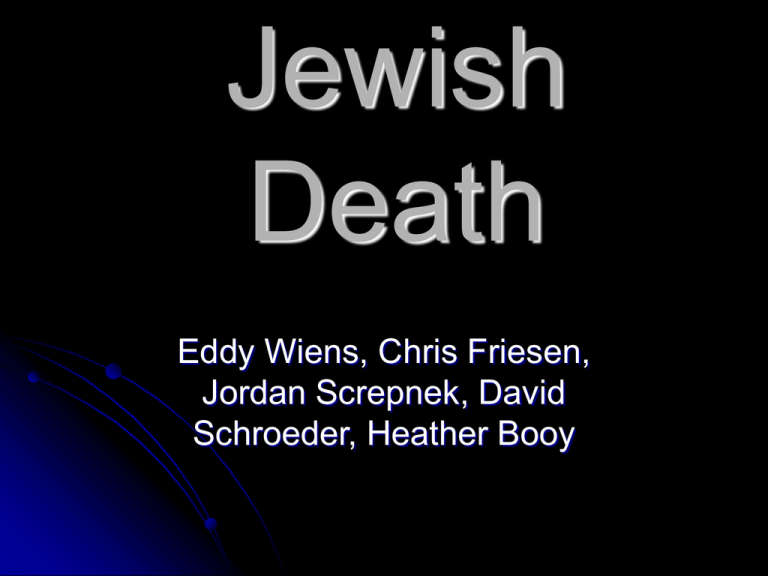
Jewish Death Eddy Wiens, Chris Friesen, Jordan Screpnek, David Schroeder, Heather Booy Introduction Two principles that govern the Jewish approach to death and morning: 1. Kavod Ha-Met – Honoring the Dead - It is extremely important to treat the body with respect and care from the time of death until the burial is completed 2. Death is a natural process Role of the Rabbi Rabbinic Consultation - families should consult the Rabbi as soon as possible when death occurs Rabbinic Guidance - any questions regarding funeral arrangements and periods of mourning should be referred to the Rabbi Chevra Kadisha A holy society, or “burial society” Assists the bereaved families in arranging for the funeral according to halacha Define requirements of proper respect for a corpse, the ritual cleansing of the body, and subsequent dressing for burial Funeral Director Rabbi should be consulted on the acceptability of a funeral director. A funeral director (also known as a mortician or undertaker) is someone involved in the business of funeral rites. The job often entails the burial or cremation of the dead. It is important that the funeral director to follow Jewish customs and tradition Cemetery Societies In some communities, there may be Jewish cemetery societies that can be used in place of a funeral director. The Rabbi should also be consulted on the use of cemetery societies. When Death Occurs Jewish law requires that burial take place as soon as possible, preferably within 24 hours of death. Exceptions may be made for legal reasons such as transporting the deceased, close relatives having to travel a long distance to attend the funeral, or avoiding burial on Shabbat. Shmirah – body of the deceased must not be left alone prior to burial. Aninut: Time Between Death and Burial Ritual cleansing (Taharah) in which the body is washed by specially trained groups of people called Hevra Kadisha or a Jewish funeral director in preparation for the burial. Once the body is washed it is dressed in a plain linen cloth called ‘Tachrichim’. Jewish male is buried wearing a kipah and his own talit (prayer shawl). Kipah Talit K’riah (during Aninut) K’riah is the tearing of a visible portion of clothing, such as a pocket or collar, just prior to the funeral service. The torn garments are worn by mourners for parents, a spouse, children, or siblings who participate in the Shivah, which is a 7day mourning period. Onen (during Aninut) Onen is an immediate family member of the deceased who is in mourning. They are exempt from the performance of all affirmative religious obligations between the time of death and the funeral, such as reciting the three daily services. The Onen is forbidden to drink wine, eat meat, or indulge in luxuries. The Funeral - Services The funeral service may be held in a synagogue, a funeral home, or at the gravesite. Brief and simple Includes the chanting of Psalms, the ‘Eyl Malei Rahamim’ (the traditional memorial prayer), and a ‘hesped’ (eulogy) honoring the deceased. The Casket Is a plain wooden coffin called an ‘Aran’. Used to avoid interference with the natural process of “returning to the earth”. Once the Taharah and dressing in Tachrichim has been completed, the casket remains closed. May be covered with a specially prepared cloth called a pall. Pallbearers stop seven times while carrying the casket to the grave. The casket is followed by mourners as a means of respect. Burial Burial is called K’vurah. Casket is lowered into the ground and covered until a mound of dirt is formed. The Kaddish, which is recited at the graveside, is a prayer said in memory of the dead . The Funeral – Burial Jewish people bury the dead, and later gather the bones and place them in tombs or containers called Ossuaries. Practice of gathering bones is called Ossiligium or “Second Burial”. Once the burial is complete, mourners wash their hands before entering the house of mourning. Ossuaries Mourning Period Initial period of mourning is called a ‘Shivah’. This is a 7-day period of intensive mourning observed by the immediate family, beginning on the day of the burial. Mourners are encouraged not to work or attend school. They are also encouraged to attend Shabbat services. During the Shivah mirrors in the homes are covered and a memorial candle is lit. Mourners do not wear leather shoes and males do not shave. Mourning Period (continued) The mourners recite the Kaddish everyday at the Shaharit, Minha, and Ma’ariv services. A minyan is required, which is the required amount of ten Jews required for public prayer Mourning Period - Shloshim The first 30 days of mourning are called ‘Shloshim’. Mourners return to work and activities, yet are still withdrawn from public entertainment and social activities. The K’riah (torn garment), is usually worn during this period. Yahrzeit – Anniversary of Death The Kaddish (prayer recited by mourners) is recited each year on the Hebrew calendar anniversary of death. It is customary to light a yahrzeit candle (lasts 24 hours), to study a portion of the Torah or Mishnah, and to donate tzedakah on the anniversary. Yahrzeit candle Yizkor The Yizkor are memorial prayers recited at synagogue services on the four Jewish holidays in remembrance of the deceased. Recited on Yom Kippur; Sh’mini Atzeret, and the second day of Shavuot. Theological Explanations Evidence for secondary burial is found in 2 Samuel 21:13-14. “David brought the bones of Saul and his son Jonathan from there, and the bones of those who had been killed and exposed were gathered up. They buried the bones of Saul and his son Jonathan in the tomb of Saul’s father Kish, at Zela in Benjamin, and did everything the king commanded. After that, God answered prayer in behalf of the land.” Theological Explanations (continued) Jewish graves are marked with the name of the deceased. The Torah says that Jacob set up a maker for Rachel. Genesis 35: 20 “Over her tomb, Jacob set up a pillar, and to this day that pillar marks Rachel’s tomb.”
